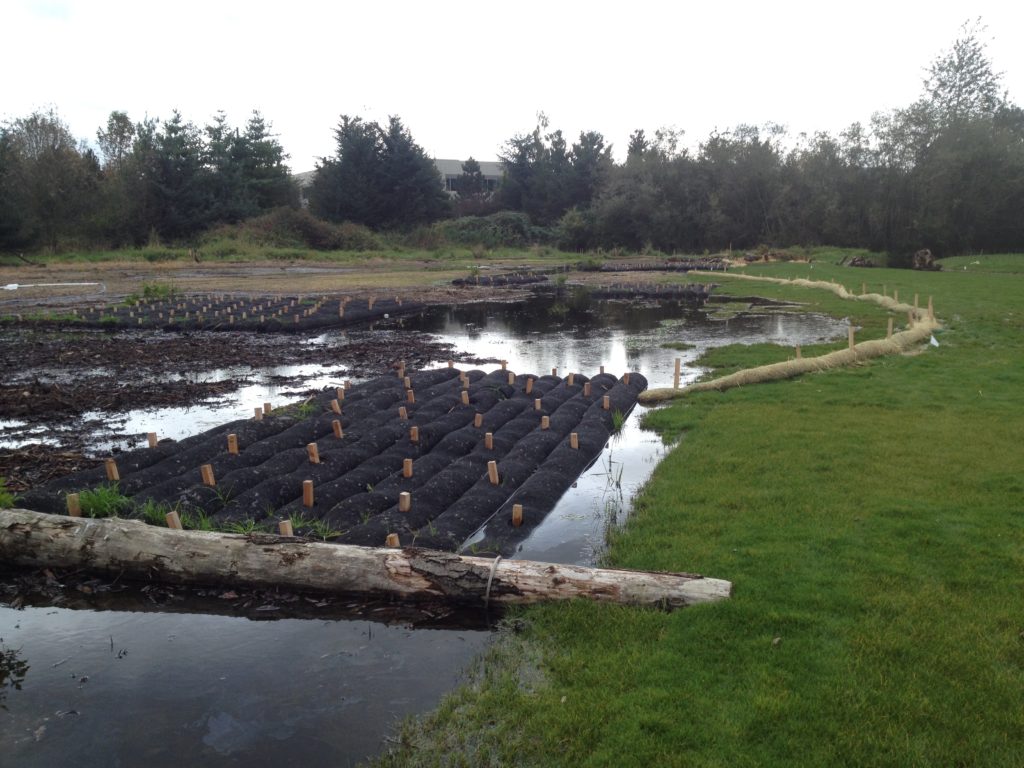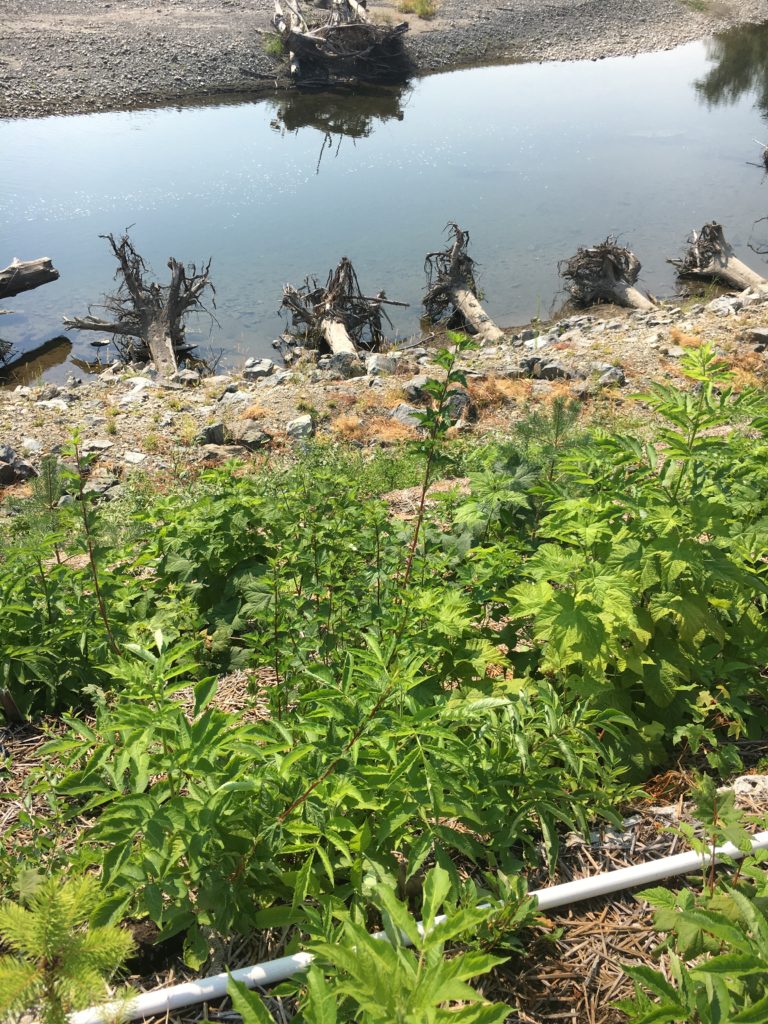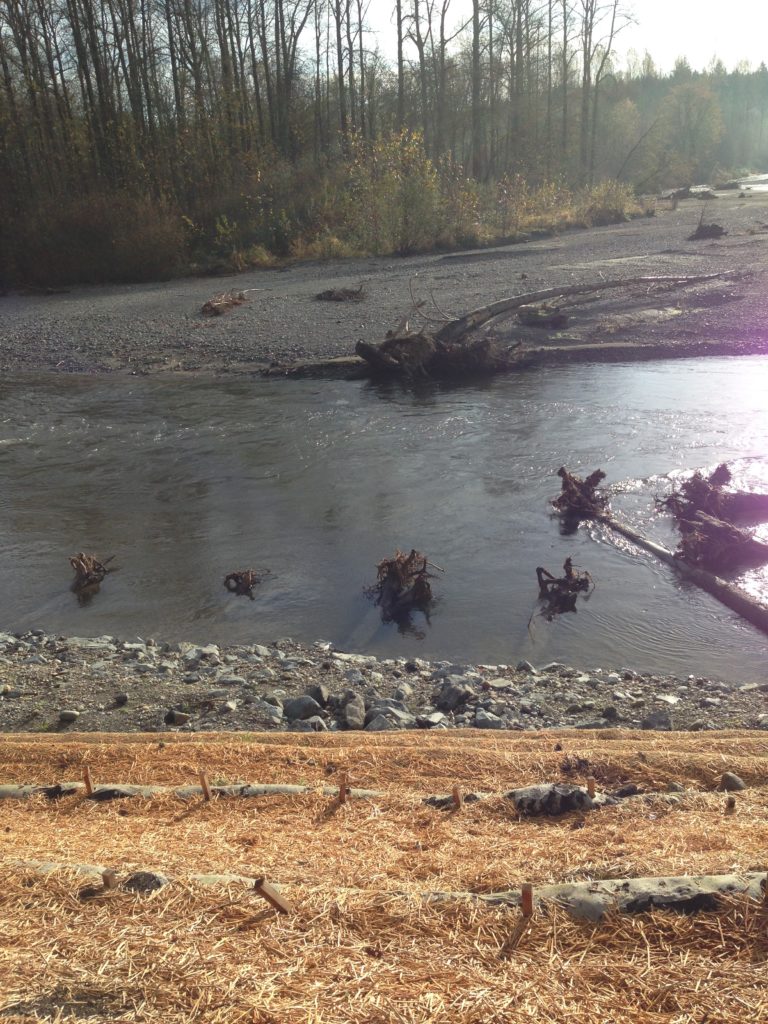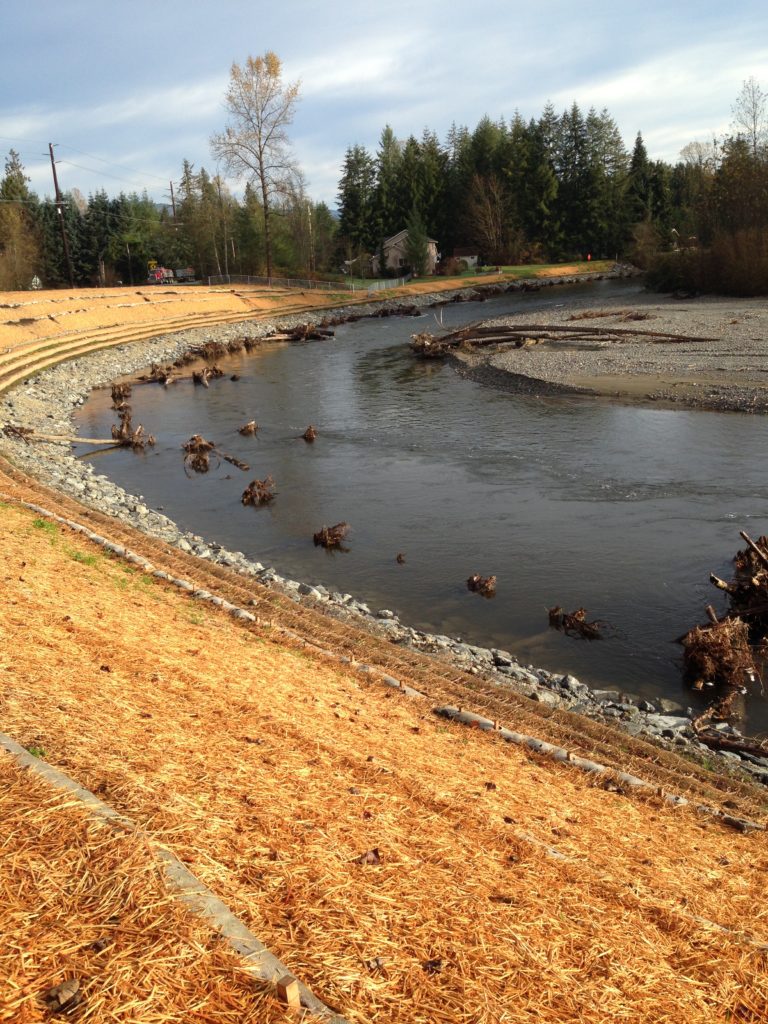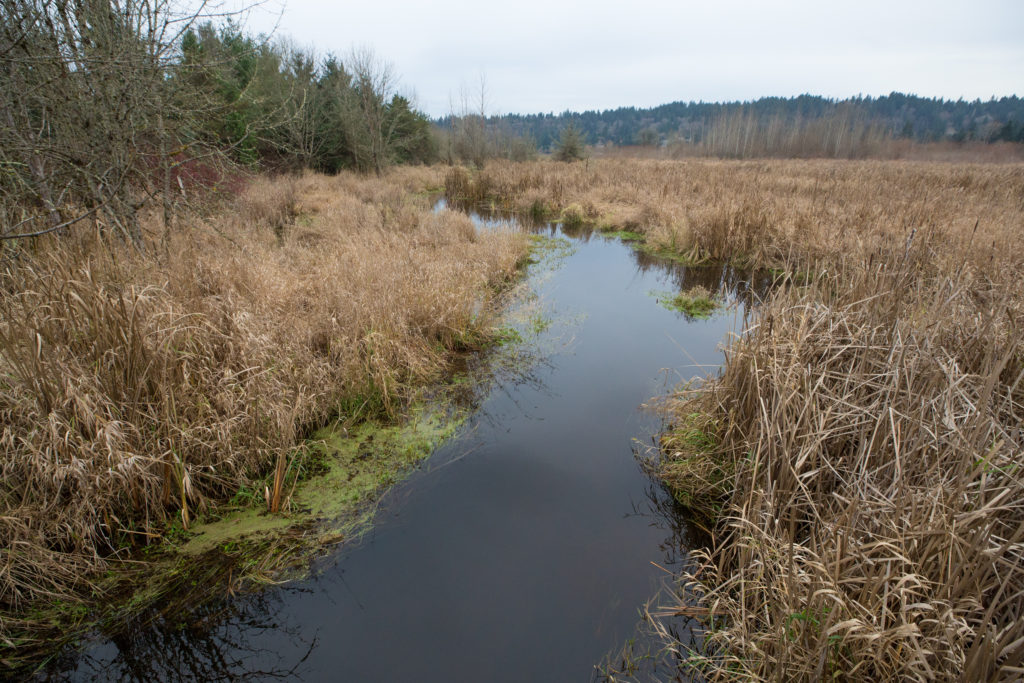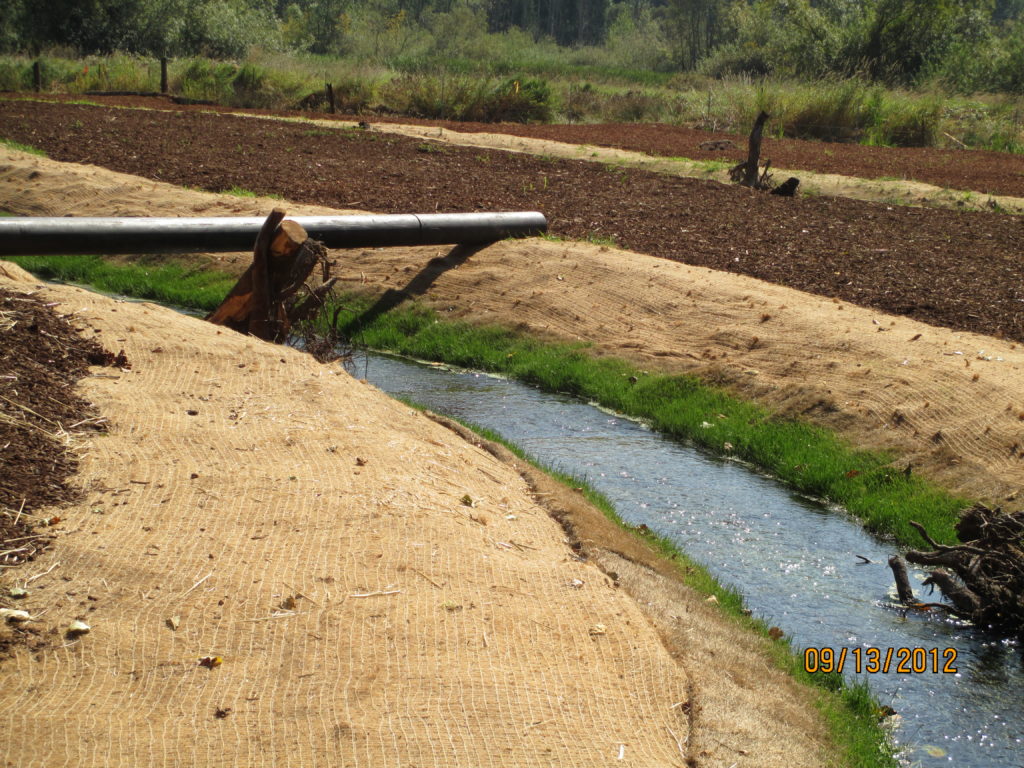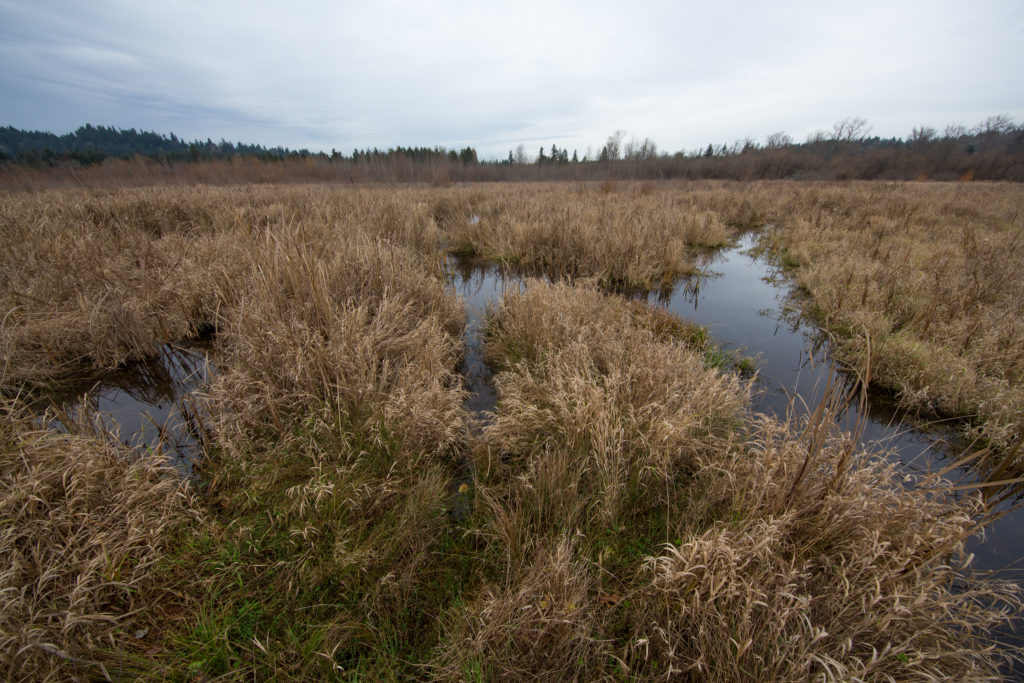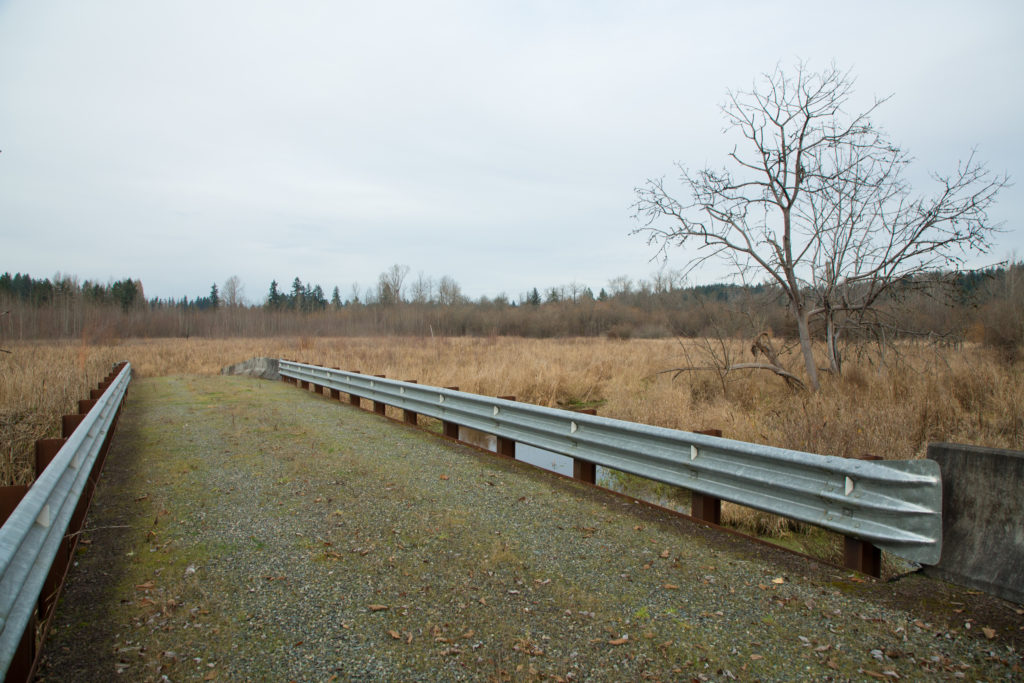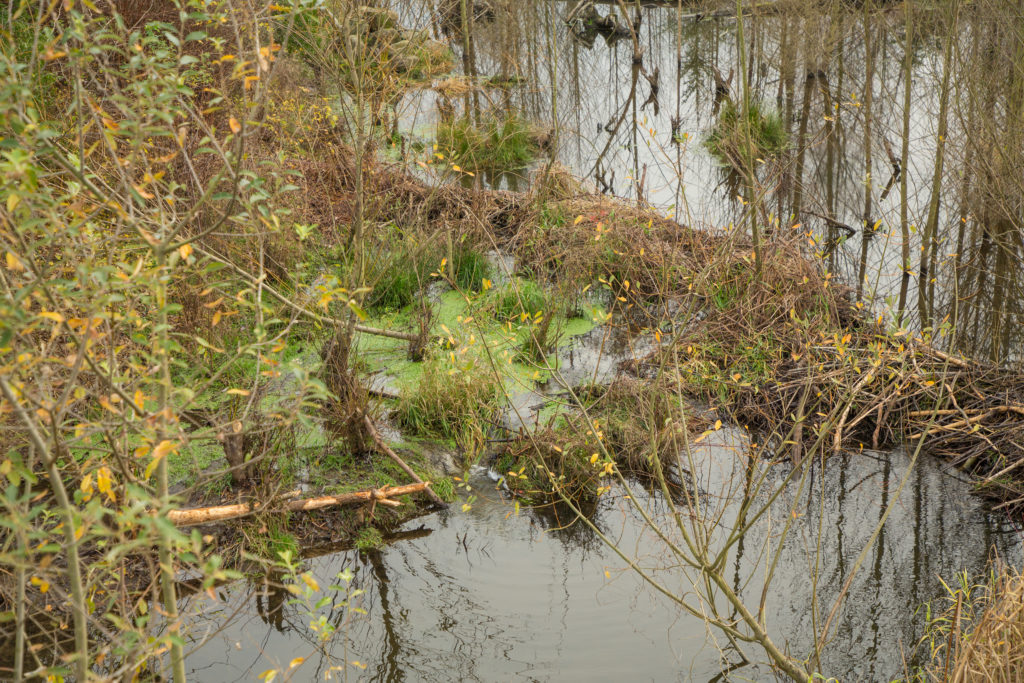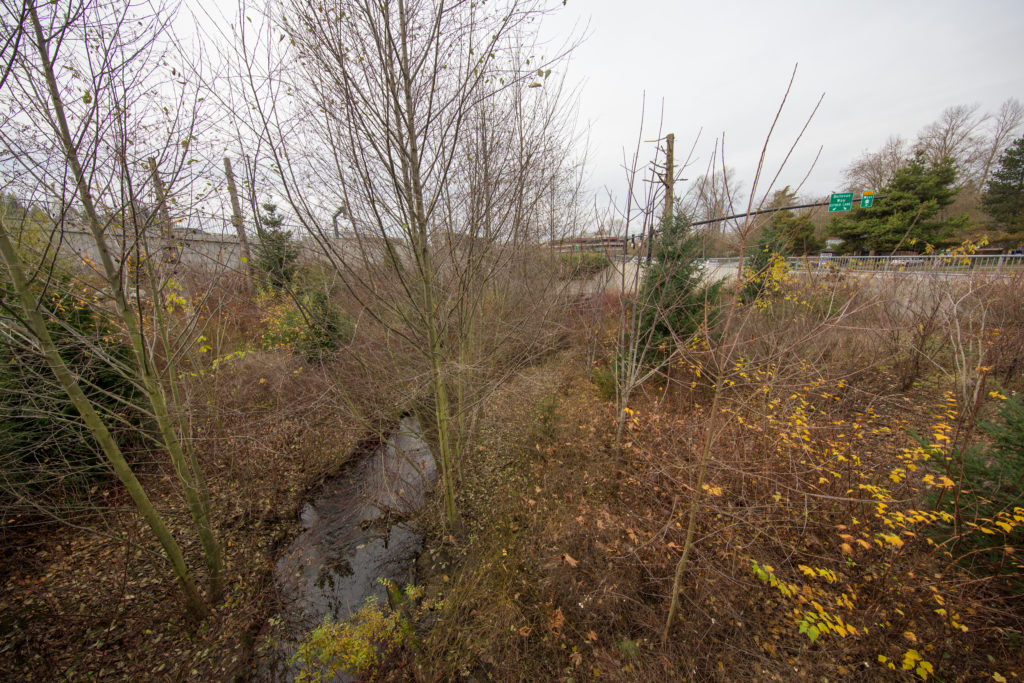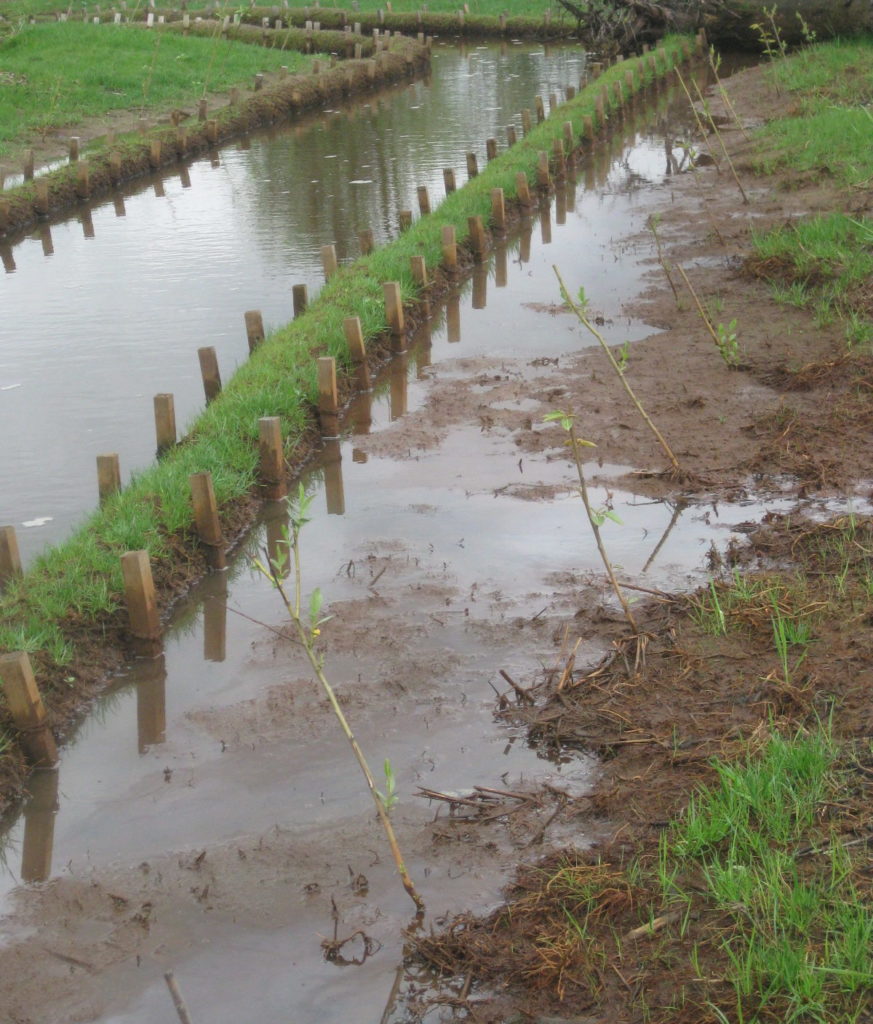Wetland Mitigation
Featured Wetland Mitigation
King Countyline Levee Setback
King County
2019
Pacific, WA
The Countyline Setback project removed an existing levee and revetment constructed in the 1910’s along the east side of the White River. The 1910 construction constricted the channel for nearly 100 years, altering the physical and biological character of the river, degrading critical fish and salmon habitat and reduced channel capacity from sedimentation, resulting in increased flood risks in the Cities of Sumner and Pacific. This project relocated the levee, addressing the immediate flood risk reduction needs as well as reconnecting 100 acres of wetland and floodplain. Reconnecting the wetlands and floodplains allows new habitats to form and existing habitats to have a more direct connection to the river.
Terra Dynamics was brought on board as the landscape contractor working directly with King County to plant 18 acres of unvegetated upland. Over 58,000 native plants were installed. Plant quantities this substantial and varied in species requires careful coordination with growers to ensure quality plants are ready when it’s time to install. Terra Dynamics has established superb relationships with brokers and growers throughout the Pacific Northwest. We work only with those who have the highest standards of plant production. In all aspects of construction, we are committed to providing you with a superior finished product.
Evan's Creek
WSDOT
2016
Redmond, WA
Evan’s Creek Mitigation Site is a new wetland created at the confluence of Bear and Evan’s Creeks. The site is designed to provide mitigation for permanently lost wetland due to the construction of the Medina to SR 202: Eastside Transit and HOV Project. The project encompassed stream diversion, construction of a new back water channel, wetland creation, restoration planting, and habitat features.
Terra Dynamics installed over 5,000 cubic yards of compost, 8,000 cubic yards of wood chips, 12,000 square yards of sod, and 110,000 plants. The most challenging aspect of this project wasn’t the enormous quantities of materials, but the access to the site—only one way in and one way out. Undaunted and mindful of the sensitive habitat we would be impacting, we drew on our years of experience on similar projects and safely, conscientiously, and efficiently transported materials, equipment and crews into and out of the site.

